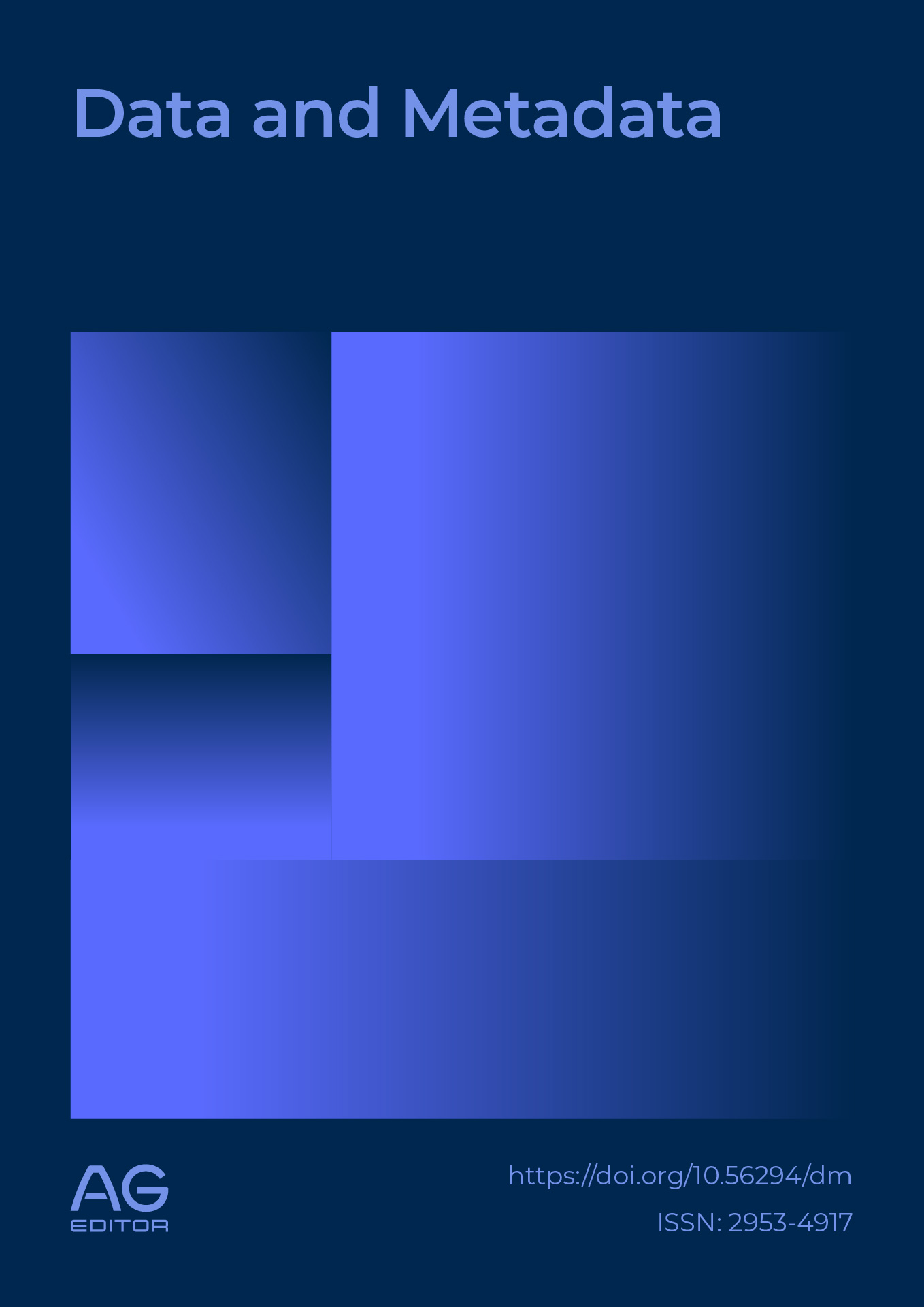Machine learning-based predictive models for digital behavioral analysis
DOI:
https://doi.org/10.56294/dm2025994Keywords:
machine learning, digital behavior, predictive models, Ecuador, classification, data analysisAbstract
Introduction: The rise of digital technology use in Ecuador has produced large volumes of data on user behavior. In this context, machine learning models provide an effective way to analyze and predict digital behavior patterns, supporting informed decision-making in fields such as marketing, education, and public policy.
Methods: A quantitative, non-experimental, cross-sectional methodology was used. A Random Forest model was applied to a simulated dataset based on parameters from the National Institute of Statistics and Censuses (INEC). The analysis focused on variables such as age, internet connection frequency, device type, and type of content consumed. Data were processed using Python and specialized machine learning libraries.
Results: The model achieved 91,3 % accuracy in classifying digital user profiles. The most predictive variables were weekly connection frequency, type of digital content, and age. Distinct behavioral patterns were identified among age groups, allowing for relevant personalized strategies.
Conclusions: The results demonstrated the effectiveness of machine learning in classifying and understanding digital behavior in Ecuador. This approach proves useful for designing more effective and ethically responsible digital interventions, as long as data privacy and protection principles are upheld.
References
lzubaidi L, Zhang J, Humaidi AJ, Al-Dujaili A, Duan Y, Al-Shamma O, et al. Review of deep learning: Concepts, CNN architectures, challenges, applications, future directions. J Big Data. 2021; 8(1):53. doi:10.1186/s40537-021-00444-8 DOI: https://doi.org/10.1186/s40537-021-00444-8
Sarker IH. Machine learning: Algorithms, real-world applications and research directions. SN Comput Sci. 2021; 2(3):160. doi:10.1007/s42979-021-00592-x DOI: https://doi.org/10.1007/s42979-021-00592-x
Shinde PP, Shah S. A review of machine learning and deep learning applications. Int J Comput Sci Inf Technol. 2018;9(3):133–9. doi:10.1109/ICCUBEA.2018.8697857 DOI: https://doi.org/10.1109/ICCUBEA.2018.8697857
Jordan MI, Mitchell TM. Machine learning: Trends, perspectives, and prospects. Science. 2015;349(6245):255–60. Available from: https://www.cs.cmu.edu/~tom/pubs/Science-ML-2015.pdf DOI: https://doi.org/10.1126/science.aaa8415
Hidalgo L, León J, Ramírez J, Toral H, Makita T, Osuna I. Systematic review analysis of the application of machine learning algorithms in intrusion detection systems in the Internet of Things for smart cities. Cienc Lat Rev Cient Multidiscip. 2025;8(6):11500–17. doi:10.37811/cl_rcm.v8i6.15929 DOI: https://doi.org/10.37811/cl_rcm.v8i6.15929
Corvalán J. Artificial intelligence: Challenges, opportunities, and challenges - Prometea: Latin America's first artificial intelligence at the service of justice. J Const Res. 2018;5(1):295–316. doi:10.5380/rinc.v5i1.55334 DOI: https://doi.org/10.5380/rinc.v5i1.55334
National Institute of Statistics and Censuses (INEC). Information and Communication Technologies (ICT) in Households and Individuals. Quito: INEC; 2023.
Contreras L, Tarazona G, Rodríguez J. Technology and learning analytics: A literature review. Sci J. 2021;41(2):150–68. doi:10.14483/23448350.17547 DOI: https://doi.org/10.14483/23448350.17547
Martín M, Alcivar R. A machine learning model for threat management with a financial institution's SIEM. Lat Am J Soc Sci Humanit. 2025;6(2):367. doi:10.56712/latam.v6i2.3633 DOI: https://doi.org/10.56712/latam.v6i2.3633
Aggarwal CC. Machine Learning for Text. Cham: Springer; 2018. DOI: https://doi.org/10.1007/978-3-319-73531-3
Mittelstadt BD, Allo P, Taddeo M, Wachter S, Floridi L. The ethics of algorithms: Mapping the debate. Big Data Soc. 2016;3(2):1–21. doi:10.1177/2053951716679679 DOI: https://doi.org/10.1177/2053951716679679
Roses G, Pila G. Personal data protection in Ecuador: A historical and regulatory review of this fundamental right in the South American country. Int J Vis Cult. 2023;13(2):1–16. doi:10.37467/revvisual.v10.4568 DOI: https://doi.org/10.37467/revvisual.v10.4568
Bishop CM. Pattern Recognition and Machine Learning. New York: Springer; 2006.
Goodfellow I, Bengio Y, Courville A. Deep Learning. Cambridge: MIT Press; 2016.
Kotu V, Deshpande B. Data Science: Concepts and Practice. 2nd ed. Burlington: Morgan Kaufmann; 2019. DOI: https://doi.org/10.1016/B978-0-12-814761-0.00002-2
Alpaslan S, Koklu N. Predicting student dropout using machine learning algorithms. Intell Methods Eng Sci. 2024;3(3):91–8. doi:10.58190/imiens.2024.103 DOI: https://doi.org/10.58190/imiens.2024.103
Mahdavinejad MS, Rezvan M, Barekatain M, Adibi P, Barnaghi P, Sheth A. Machine learning for internet of things data analysis: A survey. Digit Commun Netw. 2018;4(3):161–75. doi:10.1016/j.dcan.2017.10.002 DOI: https://doi.org/10.1016/j.dcan.2017.10.002
Ayala E, López R. Educational data mining for the analysis of academic performance in a computer science degree. In: National Congress on Computing and Educational Technology [Internet]. Available from: https://www.researchgate.net/publication/339128609_Mineria_de_datos_educativos_para_el_analisis_de_rendimiento_academico_en_una_carrera_de_computacion
Vapnik V. The Nature of Statistical Learning Theory. New York: Springer; 1995. DOI: https://doi.org/10.1007/978-1-4757-2440-0
Kuhn M, Johnson K. Applied Predictive Modeling. New York: Springer; 2013. DOI: https://doi.org/10.1007/978-1-4614-6849-3
Schmidhuber J. Deep learning in neural networks: An overview. Neural Netw. 2014;61:85–117. Available from: https://arxiv.org/abs/1404.7828 DOI: https://doi.org/10.1016/j.neunet.2014.09.003
Downloads
Published
Issue
Section
License
Copyright (c) 2025 Jennifer Lorena Sánchez Cruz (Author)

This work is licensed under a Creative Commons Attribution 4.0 International License.
The article is distributed under the Creative Commons Attribution 4.0 License. Unless otherwise stated, associated published material is distributed under the same licence.




